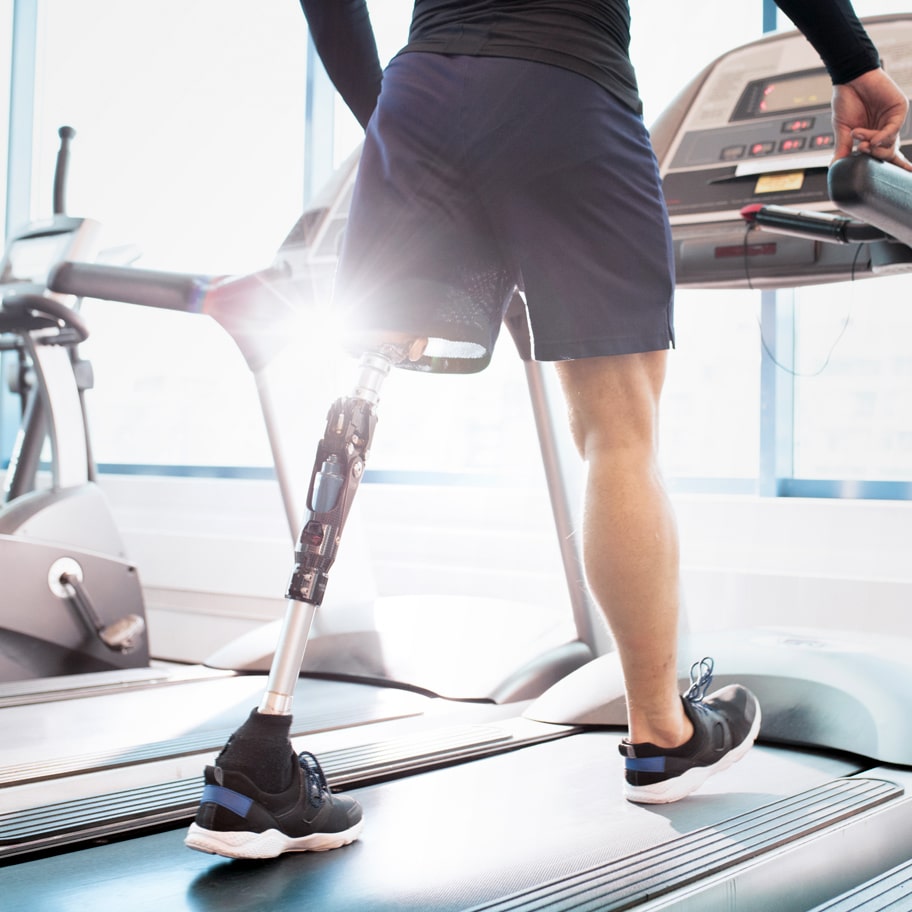What is Amputation?
Amputation is the surgical removal of a limb due to a medical illness or trauma. Amputation is a last resort for any medical team as the consequences have a permanent effect on a person’s ability to work and quality of life. Furthermore, it can have a psychological effect on a person’s mental health, often resulting in post-traumatic stress disorder (PTSD).
The Aftermath of an Amputation
The aftermath of an injury where a limb was amputated requires months of rehabilitation, learning how to use a prosthetic and adjusting to their altered circumstances.
If the injury sustained which led to an amputation happened through no fault of your own it may be possible that you are eligible for a legal remedy. To find out more information or have any queries surrounding a specific topic you can get in touch and have a confidential discussion surrounding your situation with our team of legal professionals.
Common Types
Traumatic Amputation
Traumatic amputation refers to situations where a sudden, violent and unexpected incident causes a person to lose a limb. In these cases, medical treatment is usually very quick to attend the scene of the accident. Thus increasing the person’s chance of recovery and in some cases, the limb may be reattached. In cases where the limb cannot be reattached, the amputee will generally have to undergo surgery. Amputations are common in the following accidents:
Surgical Amputation
Surgical amputation is common practice in cases where the blood supply to the injured limb is lost which leads to a condition called ‘necrosis’ (where the cells in the tissue within the limb dies). Surgical amputation is generally considered a last resort and may be necessary after a traumatic injury where bone and tissue have been badly damaged to the point where reconstruction is not an option. It may be necessary on the day of the accident but in some cases, it may be necessary weeks later if the person does not heal. After necrosis sets in and their condition deteriorates and the limb loses its function.
Areas of Amputation
Lower-limb Amputation
- Partial foot amputation – removal of one or more toes. This amputation will have an effect on the persons walking and balancing abilities
- Ankle disarticulation – removal of the foot at the ankle
- Below the knee amputations (transtibial) – amputation of the leg below the knee. This type of amputation allows the amputee to retain their knee function.
- Above the knee amputations (transfemoral) – amputation of the leg above the knee.
- Hip disarticulation – removal of the entire leg up to the hip joint.
- Hemipelvectomy (transpelvic) – removal of the entire leg including part of the pelvis
Upper-limb Amputation
- Partial hand amputation – removal of fingertips and other parts of the fingers or thumb. Losing a thumb means the person will be left without the ability to grasp objects.
- Metacarpal amputation – removal of the entire hand, leaving the wrist intact
- Wrist disarticulation – removal of the entire hand and wrist
- Below the elbow amputation (transradial) – partial removal of the arm below the elbow joint
- Elbow disarticulation – amputation of the forearm at the elbow
- Above elbow amputation – removal of the arm above the elbow
- Shoulder disarticulation – remove of the entire arm including the shoulder blade and collar bone
Causes
Accidents on the Road*
A car accident of large scale can pin and trap a driver against a vehicle or any other obstruction. This means that the emergency services may have to amputate a limb to release an individual from a trapped area.
Some examples of road traffic accidents resulting in amputation have been:
Workplace Accidents*
Amputation injuries in the workplace, most commonly leg and arm amputations injuries in the workplace frequently occur in industrial or construction areas of work, such as building sites, warehouses, farms and those who work with dangerous machinery. The cause of these injuries is usually due to a lack of safety mechanisms being implemented, inadequate training, inadequate or lack of personal protective equipment or negligence of employers/employees. An example of this consists of no safety guards around dangerous machinery, a lack of supervision and adequate training supplied.
Amputation injuries can occur in the workplace because of the following causes:
In such cases, liability may rest on the employer if it is proven that they did not provide a hazard free working environment.
Infection
A person can suffer a serious injury to a limb and attempt to make a full recovery from it. However, the limb can experience an infection of a high strength which may result in amputation. The amputation prevents the infection from spreading around the body.

